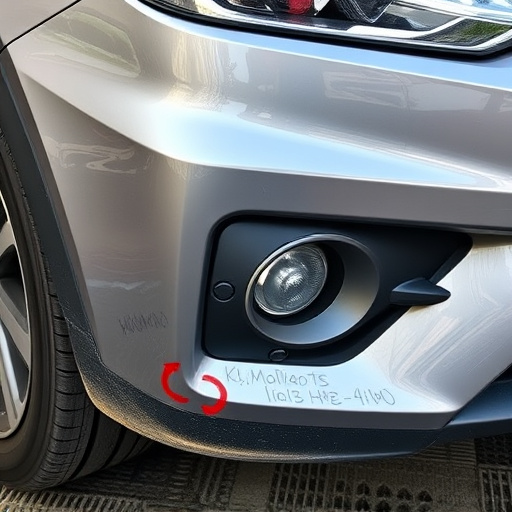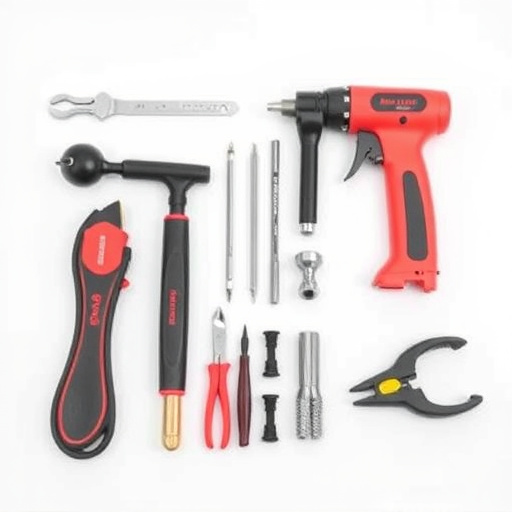The insurance estimate review process is a critical step in automotive claim management, ensuring fair compensation through accurate damage and cost assessments. For collision repair centers, mastering this process enhances efficiency, reduces errors, and improves customer satisfaction, especially for complex cases. Efficient strategies, including digital tools for data entry and analysis, clear guidelines, and regular training, are vital for accuracy. Avoiding common pitfalls like accepting estimates at face value or relying solely on visual inspections ensures a smooth evaluation process for all parties involved.
In the complex landscape of insurance claims, efficient insurance estimate review management is paramount. This article guides you through the intricacies of the process, offering valuable insights into best practices that enhance accuracy and streamline operations. From understanding the foundational steps of the insurance estimate review to navigating common pitfalls, we equip professionals with strategies for optimal results. By adopting these tactics, insurers can improve decision-making, reduce errors, and ultimately provide better service to policyholders.
- Understanding the Insurance Estimate Review Process
- Efficient Management Strategies for Better Results
- Common Pitfalls to Avoid During Estimate Reviews
Understanding the Insurance Estimate Review Process

The insurance estimate review process is a critical step in ensuring accurate and fair compensation for individuals involved in accidents. It involves several stages where detailed assessments are conducted to determine the extent of damage, cost of repairs, and replacement parts required. This meticulous process begins with a thorough inspection of the damaged vehicle, followed by the preparation of a comprehensive insurance estimate.
For collision repair centers specializing in automotive restoration or car dent removal, understanding this review process is paramount. It ensures that all necessary information is accurately documented, enabling efficient claim management and faster settlement. By adhering to best practices for insurance estimate review management, these centers can streamline operations, reduce errors, and enhance customer satisfaction—especially when dealing with complex cases that require meticulous attention to detail.
Efficient Management Strategies for Better Results

Efficient Management Strategies for Better Results
Implementing robust insurance estimate review management practices is key to ensuring accuracy and streamlining claims processes. By adopting systematic approaches, insurers can significantly enhance their operational efficiency. One effective strategy involves utilizing advanced digital tools designed specifically for insurance estimate reviews. These platforms automate data entry, enable real-time comparisons, and facilitate detailed analysis of repair estimates, minimizing human error and saving valuable time.
Additionally, establishing clear guidelines and protocols for reviewing estimates is paramount. Insurers should define specific criteria for acceptance or rejection, focusing on factors like adherence to industry standards, cost-effectiveness, and the quality of proposed repairs, whether it’s minor scratch repairs, more extensive vehicle dent repair, or complete vehicle restoration. Regular training sessions for reviewers can further ensure consistency and maintain high standards across all evaluations.
Common Pitfalls to Avoid During Estimate Reviews

During insurance estimate reviews, there are several common pitfalls to steer clear of to ensure a smooth and accurate assessment process. One major trap is accepting estimates at face value without thorough scrutiny. Each repair, whether it’s for car paint services, auto glass repair, or vehicle collision repair, should be meticulously evaluated based on the provided details and the standard industry practices. Ignoring even minor discrepancies could lead to overestimations or underestimations, affecting both the policyholder’s claim settlement and the insurance company’s financial health.
Another pitfall is relying solely on visual inspections without considering the expertise of seasoned professionals. While a quick glance might suggest that a repair job is straightforward, complex vehicle collision repairs often require specialized knowledge to accurately assess material replacement costs, labor time, and potential hidden damage. Skimping on detailed assessments or delegating them to unqualified personnel can result in inadequate estimates, leading to disputes later in the claims process for both parties involved.
Insurance estimate review management is a critical process that can significantly impact an organization’s financial health and risk management strategy. By understanding the intricacies of the review process, implementing efficient management strategies, and avoiding common pitfalls, businesses can optimize their insurance coverage and minimize costs. Effective insurance estimate reviews are not just about saving money; they ensure a comprehensive assessment of risks, enabling better-informed decision-making for future policy needs.













